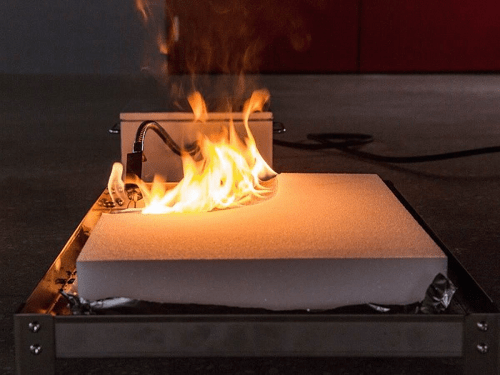
4.25.19 – UL –
In April 2016, UL announced an industry file review (IFR) for all smoke alarms and smoke detectors to address more than 350 technical changes manufacturers must make to their products to maintain their UL listing (certification). An IFR involves revisions to standards that are often necessary to keep up with innovations in technology, reflect changes in industry practices or to address new or emerging safety issues. To earn our certification, smoke alarms are evaluated to UL 217 (8th edition), Standard for Safety of Smoke Alarms, and smoke detectors are evaluated to UL 268 (7th edition), Standard for Safety of Smoke Detectors for Fire Alarm Systems.
Manufacturers of smoke alarms and smoke detectors have until May 29, 2020, to meet the new requirements. The new and revised requirements in UL 217 and UL 268 represent the most significant changes to these Standards since their initial publication in 1976. New fire and smoke tests were added to both Standards, including a flaming polyurethane foam test and a smoldering polyurethane test. Research conducted by UL, the National Institute of Standards and Technology (NIST) and the National Fire Protection Association (NFPA) demonstrated the need for these tests due to changes in home furnishing and finish materials over the past 30 years. The smoke produced from burning or smoldering foam and plastic generates a smoke aerosol with that differs in terms of smoke color, quantity and mean diameter from the smoke previously tested and covered by the Standards.
A cooking nuisance test was also added to both Standards: research shows that the number one reason why people disable smoke alarms is due to nuisance alarms caused by cooking.
Products that are being developed to meet the new requirements need to meet two important criteria:
- Increased sensitivity to meet the two new polyurethane foam tests
- Ability to distinguish between smoke aerosols from fire sources and smoke aerosols from cooking sources
Sensors that provide greater resolution or discrimination along with more complex algorithms will be utilized by manufacturers to meet these new tests.
The first multi-criteria smoke detector to meet the requirements of UL 268, 7th edition was certified by UL in September 2018. Currently, manufacturers are actively conducting their research testing and pursuing certification to the new requirements at UL’s new smoke detection test laboratory located in Northbrook, Illinois. Product certification information is included in the UL Product iQ Database. Access is free, but a one-time registration is required.
It is important to note that working smoke alarms that are within their 10-year lifespan continue to provide protection in the case of fire. When a smoke alarm needs to be replaced, look for listed and labeled smoke alarms that are certified as meeting the enhanced safety Standards.
Smoke alarms that are UL certified to the 8th edition of UL 217 and the 7th edition of UL 268 will bear an enhanced UL label that includes the statement “helps reduce cooking nuisance alarms.” Look for this image on product packaging to indicate the product has met the new and revised requirements.

For additional information, please visit https://smokealarms.ul.org or view a recorded webinar providing an overview of the new safety and performance features for enhanced smoke alarms certified to the latest UL Standards.
Author: Dan Kaiser, UL Staff Engineer, Building and Life Safety Technologies
